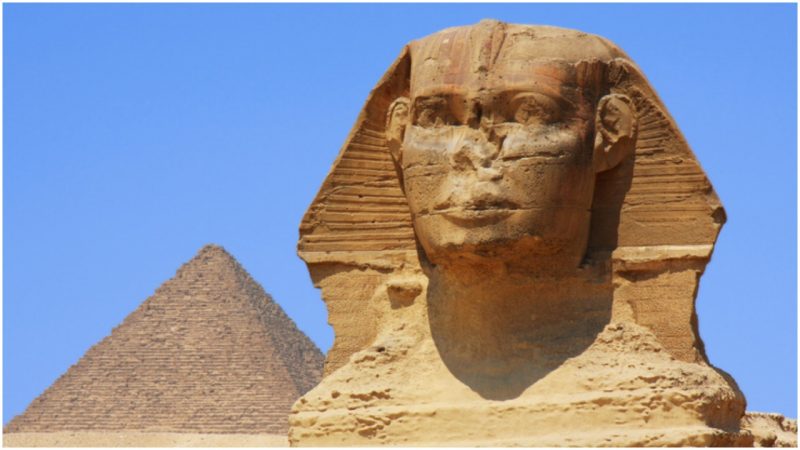The Great Sphinx of Giza has mystified the world for thousands of years. Armchair experts to the greatest Egyptologists wonder about its origins and what it represents.
Most acknowledge that it was carved in one piece from a block of limestone. It stands nearly 66 feet high and 240 feet long, with the head of a man in a royal headdress and the body of a lion.
Small spots of old paint suggest the statue was painted possibly deep red on the face and blue and yellow on the head cloth.
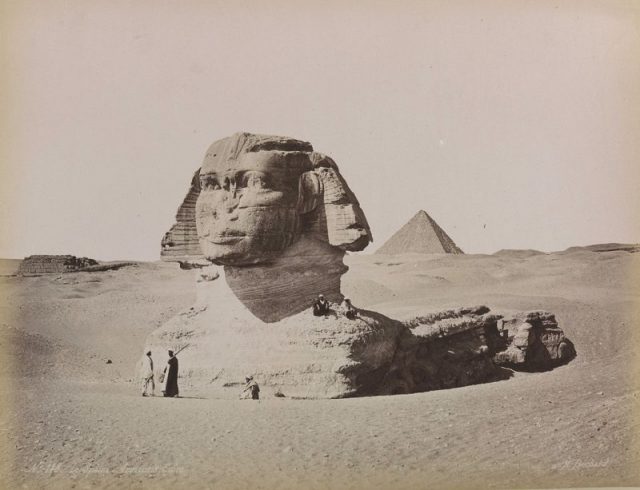
There was also a wall surrounding the statue and a temple between the giant paws.
According to the documentary, The Mystery of the Sphinx, released in 1993 and narrated by Charlton Heston, to put the size of the giant beast into perspective, the body is the equivalent of a full city block, and the head reaches up as high as a five-story building.
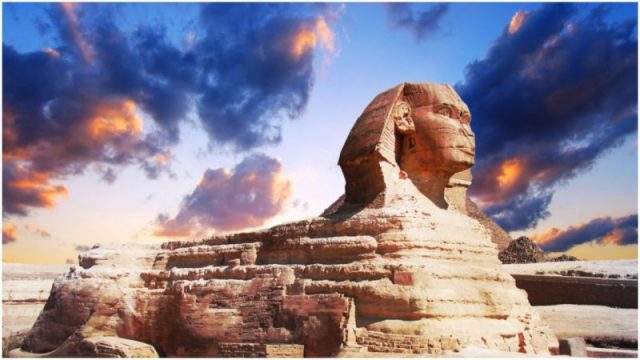
Presently, there is a rather heated difference of opinion between traditional Egyptologists and geologists, and relative newcomers such as Robert M. Schoch, an associate professor of Natural Sciences at Boston University.
Schoch theorizes the Great Sphinx is actually close to 9,000 years-old as opposed to the currently accepted theory of about 4,000 years.
One of the factors on which he bases his theory is what he believes to be evidence of water erosion rather than wind and sand erosion.
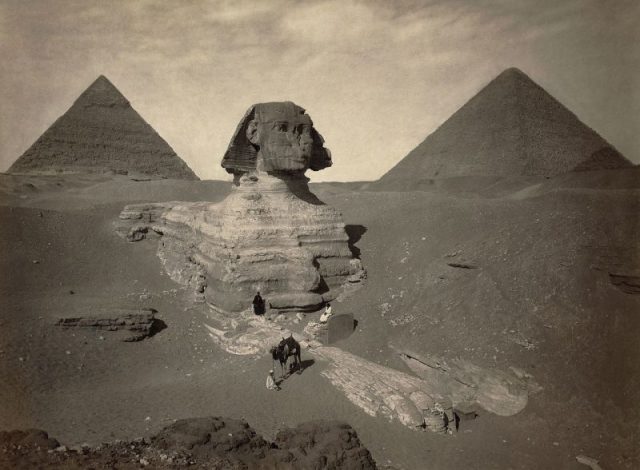
According to Smithsonian magazine, climatologists Stefan Kröpelin and Rudolph Kuper believe that 7,000 years ago the Sahara Desert was more temperate, with grasslands and streams, but over the centuries, it became the desert we know today.
Thousands of years of rain may have eroded the great statue and the surrounding wall.
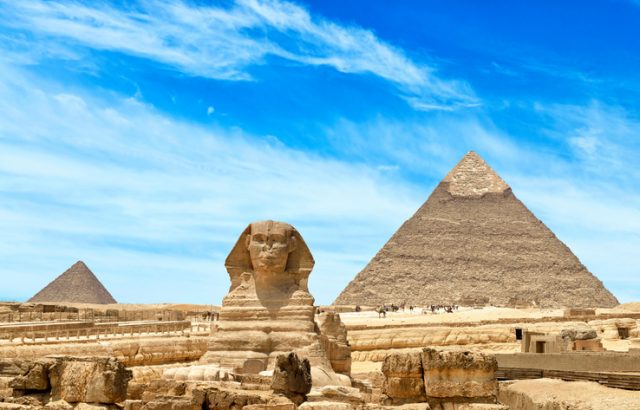
Mark Lehner, holder of a Ph.D. in Egyptology from Yale, and his associate Zahi Hawass, the Secretary General of the Egyptian Supreme Council of Antiquities, who controls access to the Sphinx, believe the Sphinx was built by Pharaoh Khafre of the Old Kingdom from 2600 B.C. to about 2400 B.C. Pharaoh Khafre is also credited with the building of the second of the Great Pyramids in Giza.
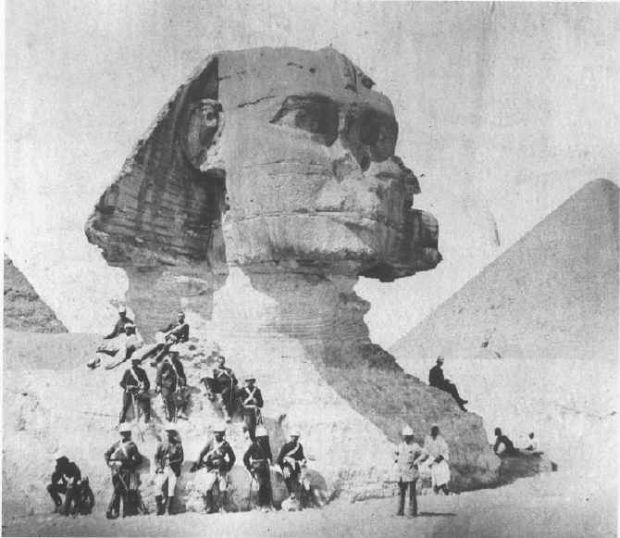
Traditional Egyptology has maintained this idea for many years and believes the Sphinx’s face is the same as a life-sized diorite statue of Khafre which was uncovered in the Giza plateau.
John Anthony West, a self-taught Egyptologist, has studied the Sphinx most of his adult life. Upon the discovery of R.A. Schwaller de Lubicz’s research papers, he realized that the Frenchman’s theory that the Sphinx is much older than what is currently agreed upon would make it impossible for the face to be that of Khafre.
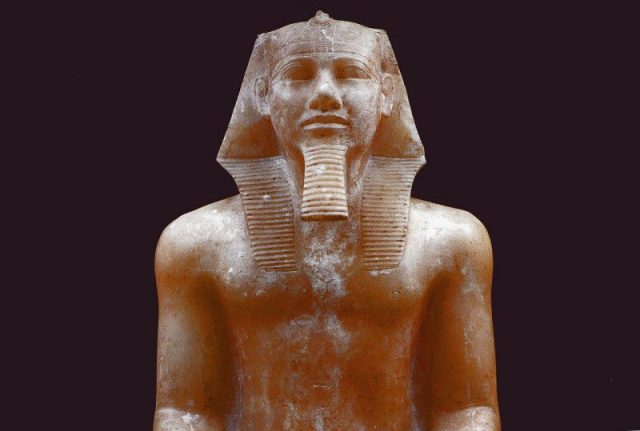
Following that theory, he hired New York City Police Lieutenant Frank Domingo to travel to Egypt and use his highly praised forensic skills and modern technology to determine if the faces match on both statues.
Aware of the ancient Egyptian propensity for exact measurements and angles, Domingo took hundreds of photos of the statue’s head and used computer analysis to determine the probability of the shape of the missing nose.
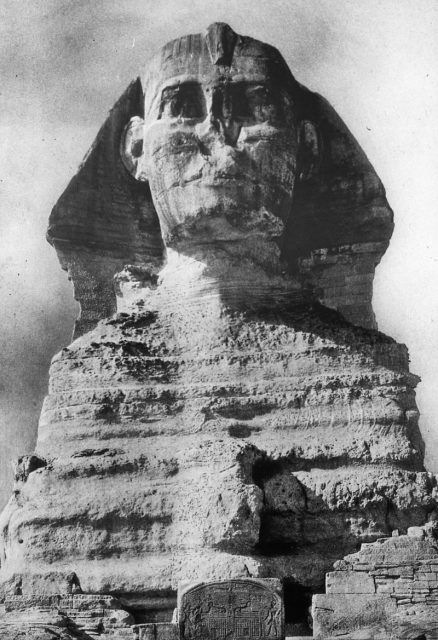
He found that not only did the faces not match; the face on the Sphinx had features consistent with black Africans.
The news did not go down well in the archeological community as it challenged such a widely held belief of the Sphinx’s origins.
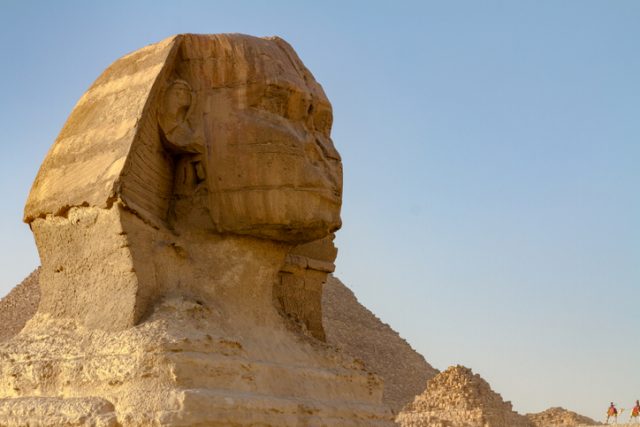
West and Schoch believe in the possibility of a previously unknown advanced society existing in Egypt long before the pharaohs. Lehner disagrees on several levels, one being the fact that no other evidence of this early civilization has been discovered. Both ideas have compelling evidence.
The deserts of Egypt hold many secrets under the constantly shifting sands that have yet to be revealed. Perhaps the Sphinx is the greatest tribute to a powerful Egyptian dynasty, as Lehner maintains.
The location near Khafre’s tomb suggests it may have been watching over the tombs of pharaohs since the 4th Dynasty. Only time and the continuing hunt for further evidence will tell.
